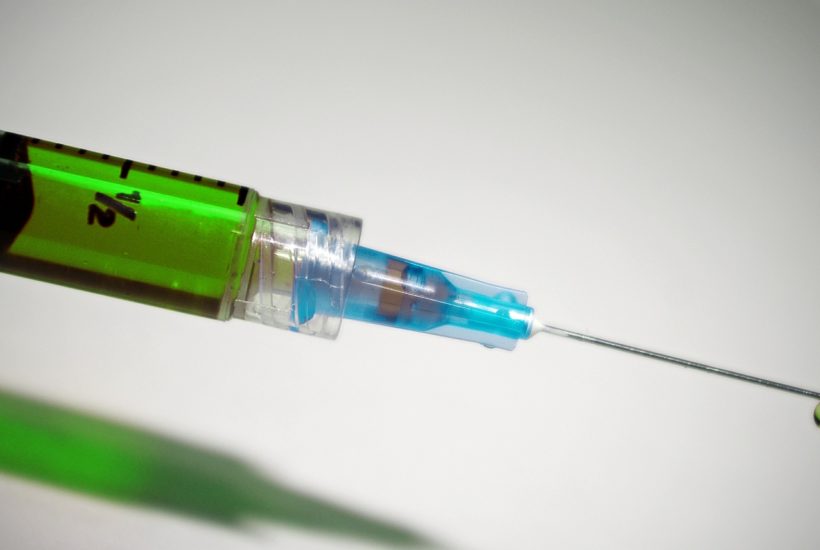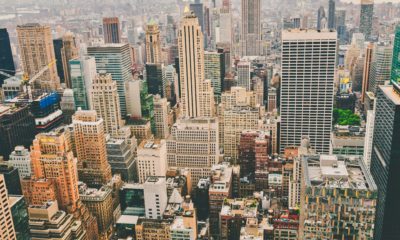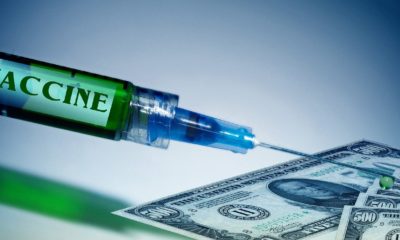Business
Will vaccines become a bridge to nowhere?
Along with the Federal Government, corporations around the world have seen their balance sheets suffer. Wall Street is hoping that all of these troubling situations will be offset by potential vaccines coming in the fall. July 14th’s intraday rally on inside information about some good results from Moderna’s vaccine trial, which was released after the close, is a great example.

The monthly U.S. budget deficit for June 2020 was a heart-stopping record of $864 billion. For reference, last year’s deficit for all of fiscal 2019 was just under $1 trillion. In other words, the June deficit was almost as much as the entire amount of red ink spilled one year ago. This year will see the worst annual amount of fiscal hemorrhaging ever—and by a whole lot. The figure will be at least $4 trillion in total, which is $2.6 trillion more than the peak suffered under the Great Recession. One has to imagine that with the Department of Labor reporting, there are now 32 million people collecting unemployment insurance as of June 27th–the amount of additional debt continues to pile up fast.
Along with the Federal Government, corporations around the world have seen their balance sheets suffer. They have issued an additional $2 trillion in new debt in the first half of 2020–a record amount. That is a 55% increase from last year’s pace. $800 billion of that total dung pile was in the U.S. Of course, our central bank has destroyed capitalism by ensuring the businesses that still make typewriters and white-out can continue to borrow money. This means a tidal wave of bankruptcies has been put temporarily on ice, but the size of the insolvency storm is rapidly intensifying. Indeed, 1 out of every 5 U.S. companies are now considered Zombies. Meaning, they don’t make enough profits to cover the interest expense on existing debt. The number of these zombies is surging because they feed off of the Fed’s falsification of credit markets.
Corporate profits are not doing much better. The Q2 earnings season has kicked off this week, and S&P profits are expected to plunge by 44%. It is indeed prudent in these uncertain times that these companies are refusing to put out EPS guidance as well. However, the total market cap to GDP ratio has surged back to an all-time high of over 153% of GDP. But only a small number of stocks are carrying the market higher. The equal-weighted S&P 500 returns so far in 2020 are down about 12%. However, you have just a handful of tech stocks in that market-cap-weighted index, which has caused it to be down only 1% this year and have also carried the NASDAQ to a record high. In fact, AAPL, AMZN, and MSFT have a market cap that is equal to nearly 25% of the entire GDP of the United States!
Consumers are feeling the pinch too, despite receiving a windfall from Uncle Sam, 32% of U.S. Households did not make a full mortgage payment in July, according to a survey done by Apartment List. That is the case even with the extra $600 per week in Enhanced Unemployment (E.U.) and the one-time $1,200 per adult and $500 per child sent via central bank helicopters. Once July 31st comes and the E.U. expires, 10’s of millions of people will see a 60% reduction in their income. That is unless D.C. extends the program, which they are highly unlikely to do in its current form, but will instead seek to give a small one-time bonus for those rejoining the workforce.
The Great Wall is getting higher
President Trump recently reported that any hopes of an imminent phase 2 trade deal is dead–there was no phase one deal in reality either. He also signed an executive order ending the preferential treatment for Hong Kong stipulating, “Hong Kong will now be treated the same as mainland China. No special privileges, no special economic treatment, and no export of sensitive technologies. In addition to that, as you know, we are placing massive tariffs and have placed very large tariffs on China.” But Mr. Trump didn’t stop with China; he is also placing 25% tariffs on $1.3 billion worth of French goods starting Jan 1st 2021.
Adding to this poop pile is the fact that the number of Wuhan virus cases are spiking with; infection rates, hospitalizations, and deaths rising alongside. This is prompting states and cities to re-locking down parts of their economies.
Also, we have sleepy Joe Biden trouncing Trump in the polls. And, the former V.P. has indicated he will be no friend of Wall Street. Translation, corporate tax rates will be heading higher along with a re-regulation of the economy.
To recap:
- we have the most narrow and expensive stock market in history
- the worst earnings season in the last 12 years
- there are nearly 32 million people collecting unemployment insurance when you include all government programs
- the fiscal cliff is nigh
- increasing hospitalizations and deaths from the Wuhan virus,
- a deteriorating relationship with China and Europe
- a socialistic surge in November is becoming more likely
Will vaccines be a panacea?
Wall Street is hoping that all of these troubling situations will be offset by potential vaccines coming in the fall. July 14th‘s intraday rally on inside information about some good results from Moderna’s vaccine trial, which was released after the close, is a great example. It should be noted that COVID-19 vaccines will not be cure-alls that produce sterilization immunity, like inoculations against measles and polio. Rather, the vaccines in development should be more like those that protect against the influenza flu virus–reducing the risk of contracting the disease and lowering the chances of becoming gravely ill in some instances. Also, the immunity period will be measured in months, not years, according to vaccine experts reporting to STAT News.
Therefore, the salient questions remain; how effective will these prophylactics be, and what percentage of the population will actually take them? Most importantly, to what extent do consumers’ and businesses’ balance sheets become impaired while we wait for a solution? In other words, once treatments and vaccines restore confidence to consumers, the benefit to the economy will hinge on if they have the spending power to consume. There must be a good job waiting for them and they cannot be encumbered by the debt accumulated while the economy was shutdown.
The odds of a significant market correction between now and November are rising. That is, unless, D.C. agrees to dig a much bigger fiscal hole to stick its head into. Of course, we are still headed for a more permanent wipeout of these asset bubbles once the stagflation sets in. Unfortunately, the inflationary and insolvency wipeout of the bond market will be devastating for those without an effective investment plan.
—
(Featured image by Liz Masoner via Pixabay)
DISCLAIMER: This article was written by a third party contributor and does not reflect the opinion of Born2Invest, its management, staff or its associates. Please review our disclaimer for more information.
This article may include forward-looking statements. These forward-looking statements generally are identified by the words “believe,” “project,” “estimate,” “become,” “plan,” “will,” and similar expressions. These forward-looking statements involve known and unknown risks as well as uncertainties, including those discussed in the following cautionary statements and elsewhere in this article and on this site. Although the Company may believe that its expectations are based on reasonable assumptions, the actual results that the Company may achieve may differ materially from any forward-looking statements, which reflect the opinions of the management of the Company only as of the date hereof. Additionally, please make sure to read these important disclosures.

-

 Crypto1 week ago
Crypto1 week agoEthereum in 2025: Volatility, Maturity, and Strategic Renewal
-

 Crowdfunding2 days ago
Crowdfunding2 days agoSumar Inversión Closes 2025 With Solid Returns and Growing Trust
-

 Markets1 week ago
Markets1 week agoSugar Markets Cautious Amid Surplus Outlook and Steady Demand
-

 Crypto2 days ago
Crypto2 days agoEthereum Momentum Builds as Bitcoin Rallies and Trilemma Claims Emerge

























